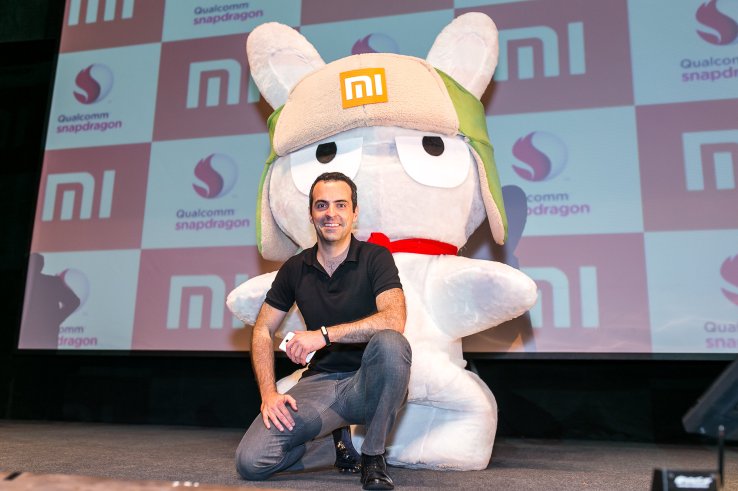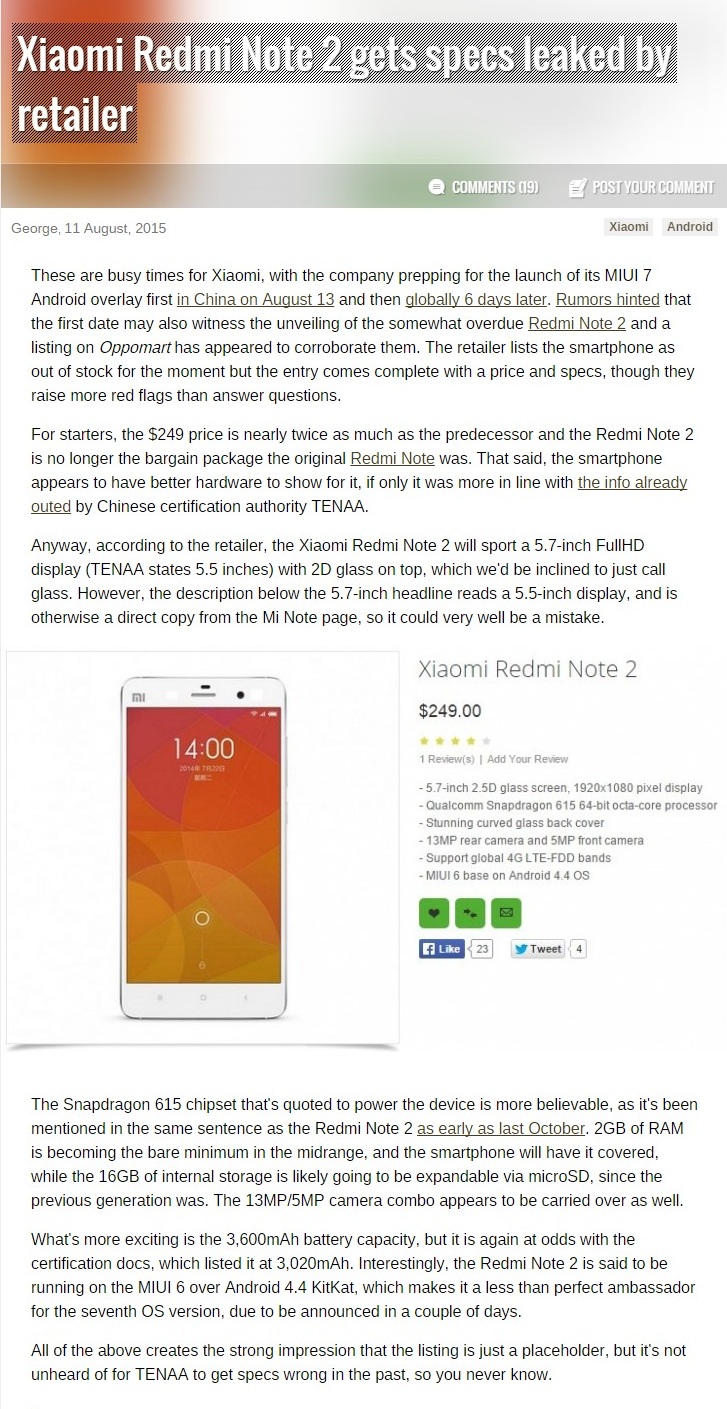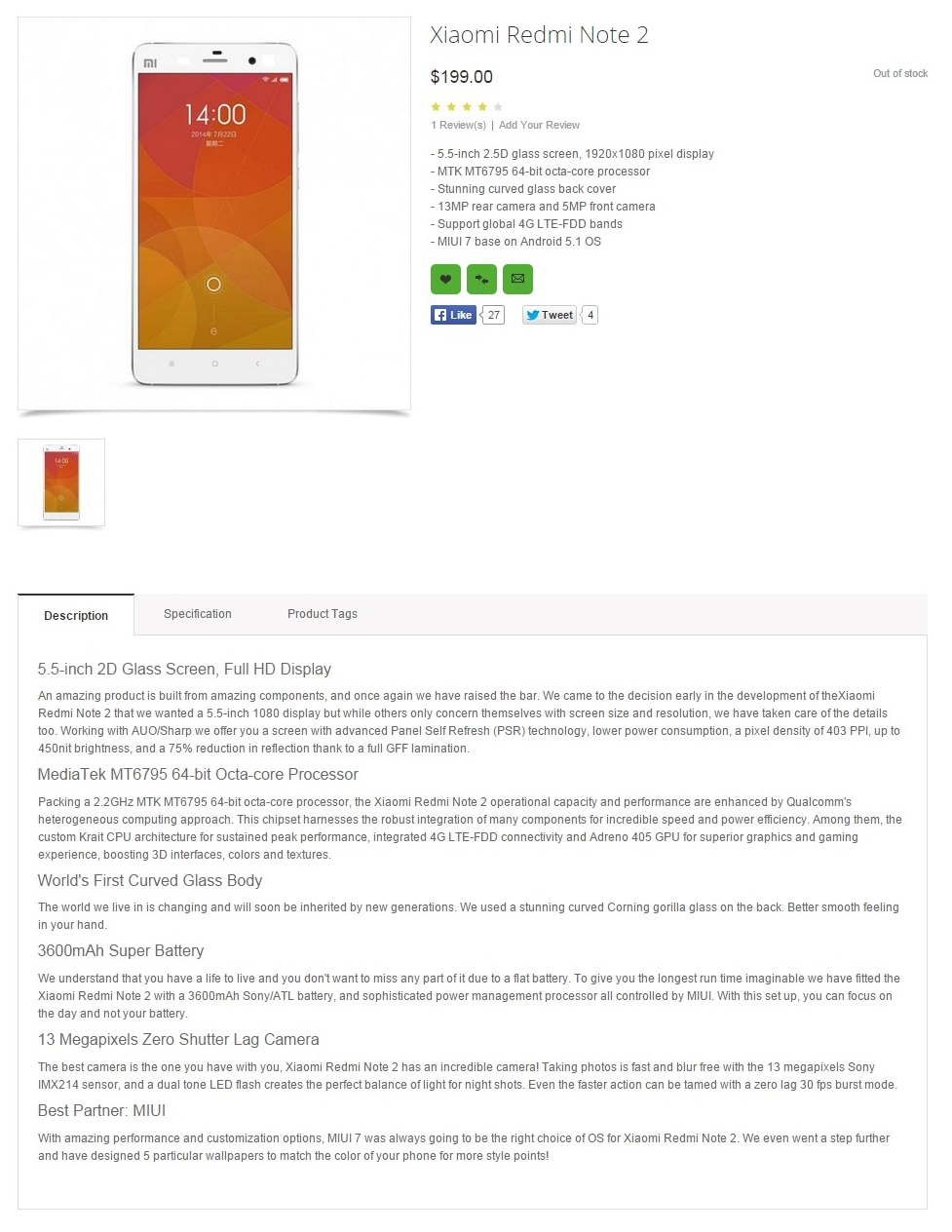Xiaomi launching their Mi Note on 27th July in Singapore
http://www.cnet.com/news/xiaomi-partners-uber-in-asia-to-sell-its-mi-note-phones/
Uber to courier Xiaomi Mi Note phones directly to customers in Asia

The ride-hailing company will hand-deliver the Chinese smartphone maker's new phablet to impatient buyers in Singapore and Malaysia.
For those who really can't wait for their latest new phone, they can now have it delivered by hand within the hour. One Internet-savvy company, the Chinese smartphone maker Xiaomi, has enlisted another, the ride-hailing service Uber, to convey its devices across the city state of Singapore as fast as traffic allows.
Drumming up publicity for the launch of its 5.7-inch Mi Note phone at an event in Singapore, Xiaomi said customers will be able to order the phablet from within the Uber app when the phone goes on sale.
Unlike Xiaomi's regular online sales, through which customers have to wait an excruciating five working days for their new devices, the Uber partnership will let customers get their hands on a unit on the same day. Within 4 minutes of them placing the order, Xiaomi says, an Uber driver will be on the way to deliver the phone.
The partnership will also be expanded to Malaysia, but only in the capital city of Kuala Lumpur. A limited number of Mi Note phones will be allocated for the Uber and Xiaomi event and will take place on July 27, a day before online sales begin.
While obviously a publicity stunt, this new approach also shows how two of the world's most valuable startups can work well together. Xiaomi, valued at $45 billion, is in a growth phase, expanding for the first time outside of Asia to Brazil, and selling 35 million handsets so far this year. The company sells its phones close to cost, forsaking traditional retailers in most of the markets in which it operates in order to keep costs as low as possible.
This allows Xiaomi to sell its high-end flagship phone, the Mi Note, at a killer price of S$569 in Singapore -- that's around $415, £270 or AU$560, much lower than comparable devices such as the HTC One M9 or the Samsung Galaxy S6. The low price also plays very much into Xiaomi's favor in an ultracompetitive smartphone market such as Singapore.
The 5.7-inch Mi Note is already available in Hong Kong and will go on sale on July 28 in Taiwan and Malaysia. Besides a 5.7-inch display, the glass-clad phablet boasts a Qualcomm Snapdragon 801 processor and 3GB of RAM. Other specs include a 13-megapixel rear camera and 64GB of onboard storage. It's powered by Google's Android software, with Xiaomi's own MIUI 6 user interface.
http://www.cnet.com/news/xiaomi-partners-uber-in-asia-to-sell-its-mi-note-phones/
Uber to courier Xiaomi Mi Note phones directly to customers in Asia

The ride-hailing company will hand-deliver the Chinese smartphone maker's new phablet to impatient buyers in Singapore and Malaysia.
For those who really can't wait for their latest new phone, they can now have it delivered by hand within the hour. One Internet-savvy company, the Chinese smartphone maker Xiaomi, has enlisted another, the ride-hailing service Uber, to convey its devices across the city state of Singapore as fast as traffic allows.
Drumming up publicity for the launch of its 5.7-inch Mi Note phone at an event in Singapore, Xiaomi said customers will be able to order the phablet from within the Uber app when the phone goes on sale.
Unlike Xiaomi's regular online sales, through which customers have to wait an excruciating five working days for their new devices, the Uber partnership will let customers get their hands on a unit on the same day. Within 4 minutes of them placing the order, Xiaomi says, an Uber driver will be on the way to deliver the phone.
The partnership will also be expanded to Malaysia, but only in the capital city of Kuala Lumpur. A limited number of Mi Note phones will be allocated for the Uber and Xiaomi event and will take place on July 27, a day before online sales begin.
While obviously a publicity stunt, this new approach also shows how two of the world's most valuable startups can work well together. Xiaomi, valued at $45 billion, is in a growth phase, expanding for the first time outside of Asia to Brazil, and selling 35 million handsets so far this year. The company sells its phones close to cost, forsaking traditional retailers in most of the markets in which it operates in order to keep costs as low as possible.
This allows Xiaomi to sell its high-end flagship phone, the Mi Note, at a killer price of S$569 in Singapore -- that's around $415, £270 or AU$560, much lower than comparable devices such as the HTC One M9 or the Samsung Galaxy S6. The low price also plays very much into Xiaomi's favor in an ultracompetitive smartphone market such as Singapore.
The 5.7-inch Mi Note is already available in Hong Kong and will go on sale on July 28 in Taiwan and Malaysia. Besides a 5.7-inch display, the glass-clad phablet boasts a Qualcomm Snapdragon 801 processor and 3GB of RAM. Other specs include a 13-megapixel rear camera and 64GB of onboard storage. It's powered by Google's Android software, with Xiaomi's own MIUI 6 user interface.










